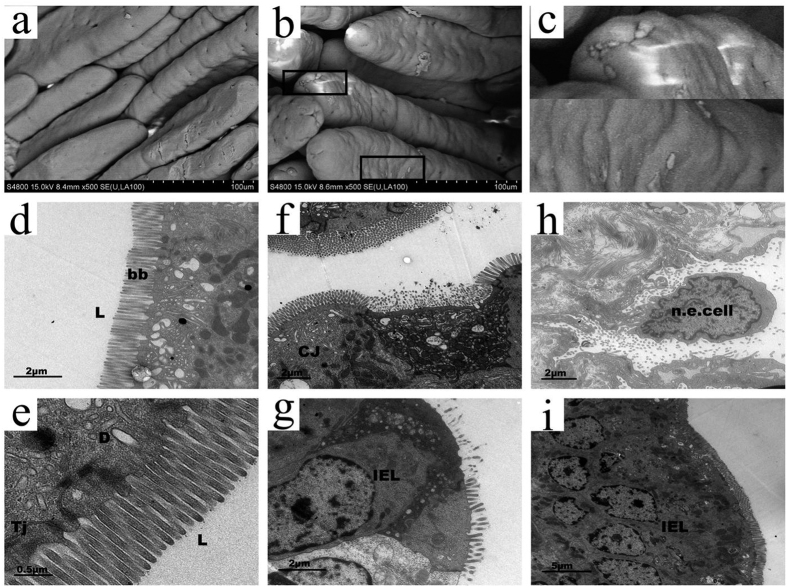Figure 4. Scanning and transmission electron micrographs of the distal small intestine of rabbits inoculated with C. jejuni.
Scanning electron micrograph of the small intestine of mock-infected (a) and C. jejuni-infected infant rabbit (b) at 24 h postinoculation. Boxed area of (b) is magnified in (c) to show the C. jejuni like bacteria colonizing the epithelial surface. Scale bar = 100 μm. The small intestine of C. jejuni-infected infant rabbit are also observed by transmission electron micrograph at 12 h (d–e), 24 h (f–g), 36 h (h) and 60 h (i) postinoculation. No C. jejuni are observed in lumen (L) and brush border (bb) remain intact at 12 h postinoculation (d), scale bar = 2 μm. Higher magnification image of (d) showing the tight junctions (Tj) and desmosomes remain intact (e), scale bar = 0.5 μm. Cluster of C. jejuni (CJ) locate in a cavity below the normal level of the surrounding epithelium when 24 h postinoculation (f), note the brush border of adjacent cells remain intact. Scale bar = 2 μm. At the same time, epithelium is destroyed and intraepithelial lymphocyte (IEL) infiltrating are observed (g), scale bar = 2 μm. C. jejuni locates at the base of a necrotic epithelial cell (n.e. cell), with more bacteria in the intestinal lumen at 36 h (h), scale bar = 2 μm. Following a severe inflammatory infiltrate of intraepithelial lymphocytes are observed at 60 h postinoculation (i), scale bar = 5 μm.

